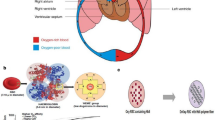Abstract
The mechanism responsible for the decreased red blood cell (RBC) lifespan associated with feeding propylene glycol (PG)-containing diets was investigated to understand better how Heinz body-contained RBC are destroyed. Three cats were fed a diet containing 12% PG for 14 days and three other cats served as control. The experimental group developed reticulocytosis and increased Heinz body numbers. Red blood cell membrane immunoglobulih G (IgG) concentration and phagocytosis of RBC by peritoneal macrophages were lower in the PG group compared to the control group suggesting that neither IgG nor non-IgG-mediated phagocytosis was responsible for the RBC destruction. Osmotic fragility, rate of RBC proteolysis and mild mechanical fragility test results were not statistically different from controls. However, when RBC from cats fed PG were exposed to severe mechanical stress, their fragility were increased 2.2–2.8 times. Additionally, haptoglobin concentrations were decreased in the PG group. These data suggest that intravascular lysis may be involved in the pathogenesis of PG-induced RBC destruction.
Similar content being viewed by others
References
Andreasen F (1969) A new method for the estimation of the mechanical resistance of the red blood corpuscles. Scand J Clin Lab Invest 16:503–510
Bauer MC, Weiss DJ, Perman V (1992) Hematologic alterations in adult cats fed 6 and 12% propylene glycol. Am J Vet Res 53:69–72
Blue J, Weiss L (1981) Vascular pathways in nonsinusal red pulp: an electron microscope study of the cat spleen. Am J Anat 161:135–168
Blue JT (1991) Anemia in cats (Part II). Fel Health Topics Vet 6:1–4
Christopher MM (1969) Relation of endogenous Heinz bodies to diseases and anemia in cats: 120 cases (1978–1987) J Am Vet Med Assoc 194:1089–1095
Christopher MM, Weiss DJ, Perman V (1985) Heinz body formation and anemia in cats. Minn Vet 25:26–31
Christopher MM, White JG, Eaton JW (1990) Erythrocyte pathology and mechanisms of Heinz body-mediated hemolysis in cats. Vet Pathol 27:299–310
Davies KJA (1987) Protein damage and degradation by oxygen radicals. J Biol Chem 262:9895–9901
Deuticke B (1989) Mechanisms of oxidative formation of membrane leaks in the erythrocyte membrane. Stud Biophys 134:99–104.
Finco DR, Duncan JR, Schall WD et al. (1975) Acetominophen toxiocosis in the cat. J Am Vet Med Assoc 166:469–472
Harvey J, Kornick HP (1976) Phenazopyridine toxicosis in the cat. J Am Vet Med Assoc 169:327–331
Harvey JW (1976) Quantitative determination of normal horse, cat, and dog haptoglobins. Theriogenology 6:133–138
Harvey JW, Kaneko JJ (1977) Mammalian erythrocytes metabolism and oxidant drugs. Toxicol Appl Pharmacol 42:253–261
Hickman MA, Rogers OR, Morris JG (1990). Effects of diet or Heinz body formation in kittens. Am J Vet Res 50:475–478
Kalraiya RD, Mehta WG (1985) N-Ethylmaleimide causes mechanical fragility and accumulation of spectrum dimers in the rat erythrocyte membrane. Biochem Biophys Res Commun 130:157–162
Kay MMB (1988) Aging of cell membrane molecules leads to appearance of an aging antigen and removal of senescent cells. Gerontology 31:215–219
Jain NC (1973a) Osmotic fragility of erythrocyte of dogs and cats in health and certain hematologic disorders. Cornell Vet 63:414–423
Jain NC (1973b) Studies on the occurrence and persistence of Heinz bodies in erythrocytes of the cat. Folia Haematol (Leipz) 99:28–38
Low P, Waugh SM, Zinke K et al. (1985). The role of hemoglobin denaturation and band 3 clustering in red cell aging. Science 227:531–532
Quast JF, Humiston CG, Wade CE (1980) Results of toxicology studies in cats fed diets containing propylene glycol for 3 months. (abstract) Proceedings, 19th annual meeting, Society of Toxicology A26
Rebar AH, Lewis HB, DeNicola DB et al. (1981) Red cell fragmentation in the dog: an editorial review. Vet Pathol 18:415–426
Schalm OW, Smith R (1963) Some unique aspects of feline hematology in disease. Small Anim Clin 3:311–322
Schechter RD, Schalm OW, Kaneko JJ (1973) Heinz body hemolytic anemia associated the use of urinary antiseptics containing methylene blue in the cat. J Am Vet Med Assoc 162:37–44
Schulter K, Drenckholm D (1986) Co-clustering of denatured hemoglobin with band 3: its role in binding of autoantibodies against band 3 to abnormal and aged erythrocytes. Proc Natl Acad Sci USA 83:6137–6143
Schwab MLL, Lewis AE (1969) An improved stain for Heinz bodies. Tech Bull Regist Med Tech 39:93–95
Shen SC, Castle WB, Fleming EM (1944). Experimental and clinical observations on increased mechanical fragility of erythrocytes. Science 100:387–389
Srivastava SK, Ansara NH, Liu S et al. (1989). The effect of oxidants on biomembranes and cellular metabolism. Mol Cell Biochem 91:149–157
Taketa F, Smitz MR, Dibona FJ et al. (1967) Studies on cat hemoglobin and hybrids with human hemoglobin. Anal Biochem 6:3809–3816
Udenfriend S, Stein S, Bohlen P (1972). Fluroscamine: a reagent for assay of amino acids, peptides, proteins and primary amines in the picomole range. Science 178:871–873
Weiss DJ (1988) Susceptibility of canine, feline and human erythrocytes to oxidant-mediated injury. Vet Clin Pathol 17:75–78
Weiss DJ, McClay CB (1988) Studies on the pathogenesis of erythrocyte destruction associated with the anemia of inflammatory disease. Vet Clin Pathol 17:90–93
Weiss DJ, Murtaugh MP (1990) Activated neutrophils induce erythrocyte immunoglobulin binding and membrane protein degradation. J Leuk Biol 48:438–443
Weiss DJ, Aird B, Murtaugh MP (1992) Neutrophil-induced immunoglobulin binding to erythrocytes involves proteolytic and oxidative injury. J Leuk Biol 51:19–23
Author information
Authors and Affiliations
Rights and permissions
About this article
Cite this article
Weiss, D.J., Bauer, M.C., Murphy, M.J. et al. Increased mechanical fragility and intravascular lysis of erythrocytes in cats fed a propylene glycol-containing diet. Comparative Haematology International 2, 157–161 (1992). https://doi.org/10.1007/BF00426170
Issue Date:
DOI: https://doi.org/10.1007/BF00426170




